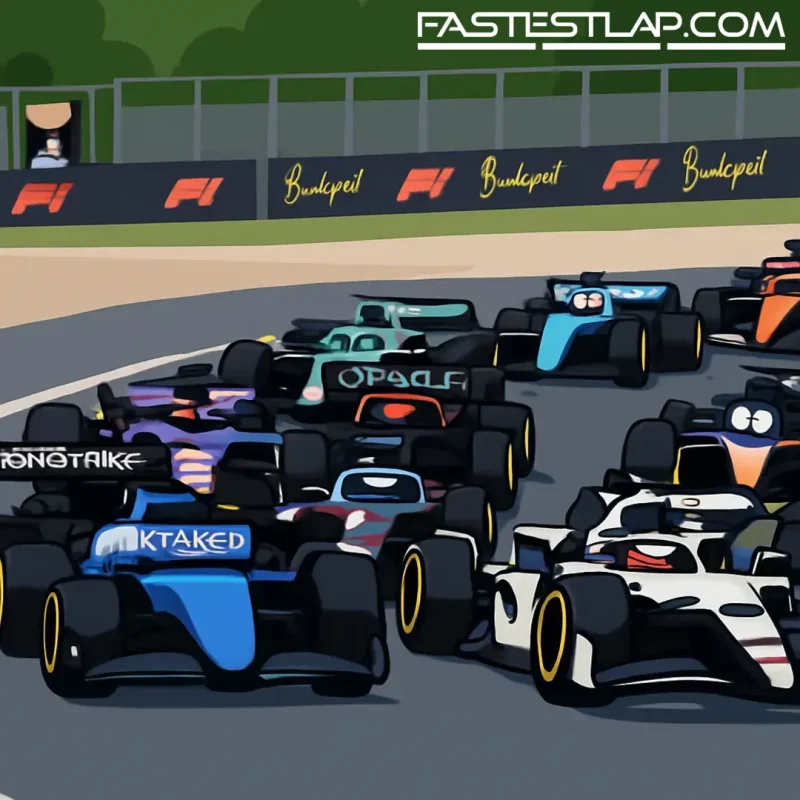‘Formula World Championship’ emerges from Serbia, promising an F1 rival with 28 spec cars and a lot of questions
An obscure governing body in Belgrade says it’s building a global single-seater series to go up against Formula 1. On paper, it’s bold. In reality, it’s… ambitious.
The World Motorsport Confederation (WMC) has unveiled the Formula World Championship for Drivers, a 17‑round, four‑day, all‑continents tour slated to launch within two to three years. The series would run to WMC’s own Technical and Sporting Regulations, with events billed as “Grand Trophy” races. The grid? Twenty-eight cars across 14 teams, all in identical machinery produced by a commercial arm called Formula Race Management.
The technical sketch reads like a greatest hits wishlist: a 650kg car with an unspecified naturally aspirated engine producing 850bhp, running on synthetic fuel, and aiming for full carbon neutrality by 2030. It’s the sort of spec that sounds terrific in a press release and wildly expensive everywhere else.
WMC presents itself as a non-profit, founded in 2021 and “dedicated to advancing the sport.” Yet for a body now claiming to set the “highest rank in Formula racing,” it’s been quiet. Its website is a logo and an email address; when pressed, representatives haven’t offered detail on funding or developmental activity to date.
Scratch the surface and things get stranger. Public records show the WMC website was registered by the Partizan Car Club (Auto Klub Partizan), active since 2013 with Bosko Milovanovic as director. The name Zoran Stefanovic also appears in the orbit — listed as a former owner of that club until early 2023 and, more pertinently, the current president of WMC. Another entity, Federacija Motornog Sporta (Motor Sports Federation), founded in 2013 with Stefanovic listed as owner, shares a strikingly similar website style and the same registered address as both WMC and the Partizan Car Club — which also happens to be the address of FK Partizan football club. WMC denies any connection to the Auto Klub Partizan or Milovanovic, despite the overlaps in public registries.
For those with long memories, Stefanovic is hardly a new name around Formula 1. He was the force behind Stefan Grand Prix, the would‑be entrant that tried to muscle into the 2010 grid after USF1 imploded, armed with Toyota’s mothballed chassis, gearbox and 2010‑spec power unit. An entry never came. He put his name forward again in 2011 during the FIA’s search for a new team for a future slot — again, nothing. In 2017, he resurfaced claiming facilities and staff were ready to go. The grid did not notice.
The WMC says it’s signed Enrique Scalabroni as chief technical officer of both the confederation and Formula Race Limited (also Belgrade‑based). Scalabroni’s CV is real enough: engineering roles at Williams in the mid‑1980s, Ferrari at the end of that decade, Lotus in the early ’90s, sportscars, and a late‑’90s consultancy stint back at Williams. If this project has a credible pillar, he’s it.
But pillars and press statements don’t make a world championship. Logistics do. Money does. Circuits do. TV does. Sanctioning, safety standards, tires, freight contracts, a calendar that fits in a crowded motorsport ecosystem — all of that has to land before the first “Grand Trophy” weekend opens its paddock gates on a Thursday. And that’s before you ask where 14 teams and 28 professional drivers appear from and who pays their bills.
There’s also the small matter of legitimacy. Formula 1 sits under the FIA, the recognized global authority for four‑wheel motorsport. In Serbia, that role is held by the Auto‑Moto Association of Serbia (AMSS). WMC sets itself up as a rival confederation to the FIA, which is a bit like inventing your own Olympic committee and promising a world games. You can do it. Getting the world to care is the trick.
None of this is to say disruption is unwelcome. A credible, sustainable spec series with a clean-fuel brief and proper backing could slot neatly into the landscape and even push the established order. But this isn’t the 1960s. The modern top tier of single‑seaters is a multi‑billion‑dollar ecosystem with a fiercely guarded ladder and a global broadcast machine. Beating it — or even sitting alongside it — requires more than an eye‑catching acronym and a carbon‑neutral pledge.
For now, the Formula World Championship exists on letterhead and in lofty language. It says it will turn up with 17 races across all continents, in 2–3 years, with equal cars, a green agenda and a technical director who’s been around the block. If the WMC can wheel a prototype into the light, sign venues, announce teams and show funding, people will listen. Until then, chalk it up as the latest big promise aimed at a sport that’s never looked harder to chase. F1 won’t be losing sleep tonight — but we’ll keep an eye on Belgrade.




